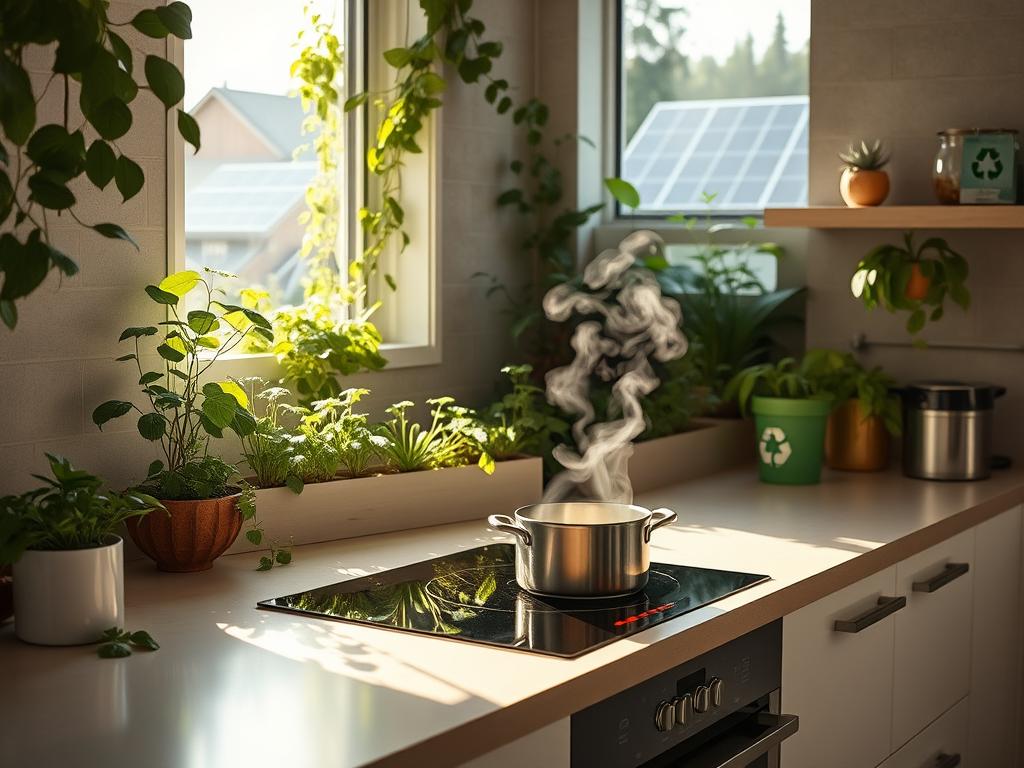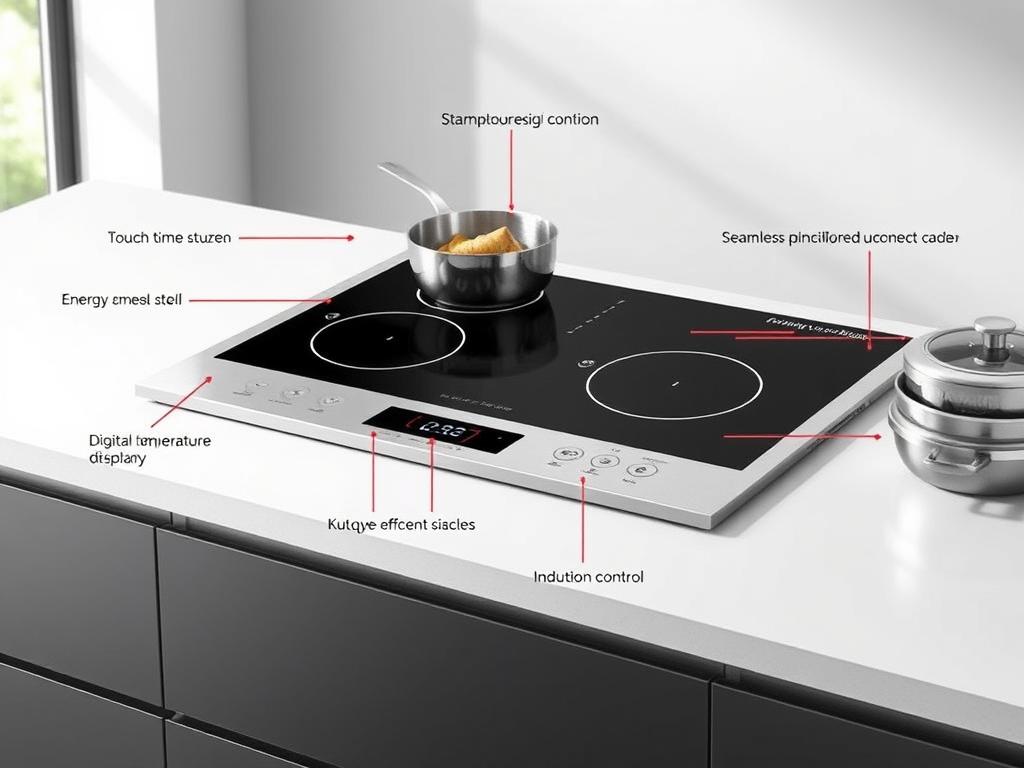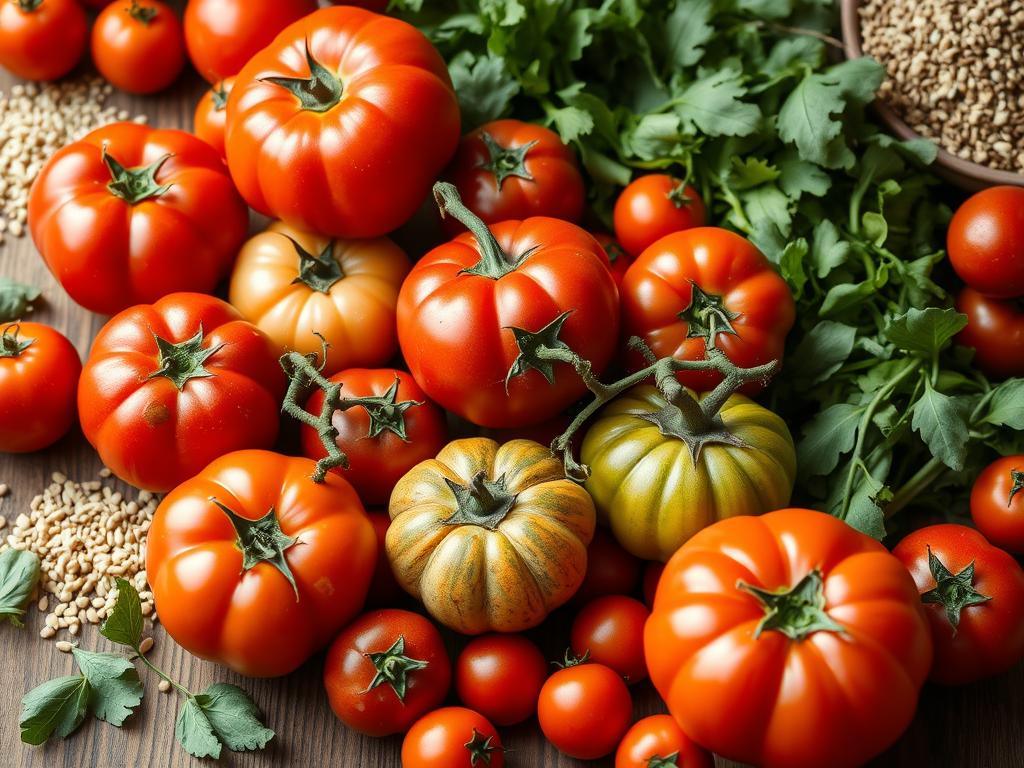Imagine standing in your kitchen, the tantalizing aroma of dinner wafting through the air, your loved ones gathered around the table, eagerly awaiting a home-cooked meal. Cooking is a quintessential part of many of our lives, often tied to memories of family, warmth, and connection. However, as our modern lifestyles evolve, so do our cooking methods.
That’s where induction cooking comes into play—revolutionizing the way we prepare food. With its ability to heat water 50 percent faster than traditional gas or electric cooktops and offering safer kitchen experiences, understanding the benefits of induction cooking and exploring the induction cooking technology opens up a world of culinary possibilities. Let’s dive into how induction cooking works and why it could become your next favorite kitchen upgrade.
Induction cooking is not just a trend; it’s a game-changer. From the energy efficiency that leads to savings on your utility bill, to the safety features that keep your family secure, learning about induction cooking benefits can empower you to make informed kitchen choices. With the rise of urban regulations increasingly phasing out gas appliances, exploring this cooking method will help you stay ahead of the curve, bringing joy and expertise to your culinary adventures.
Key Takeaways
- Induction cooktops boil water 50% faster than gas and electric options, enhancing cooking efficiency.
- They offer improved temperature control and reduced spills or boil-overs.
- Energy-efficient designs lead to significant cost savings on energy bills.
- The cool-to-the-touch surface makes cleaning simple and safe.
- Induction cooking is recognized for its safety, minimizing the risk of burns.
- This modern technology embraces a sustainable approach to our culinary practices.
- With advancements in induction cooking, auto-sizing features streamline the cooking experience.
What is Induction Cooking?
Induction cooking represents a significant advancement in cooking technology. This innovative method utilizes induction cooking technology to create heat directly within the pan instead of relying on an external heat source. The versatility and efficiency of induction cooking make it a popular choice among modern kitchens.
The Technology Behind Induction Cooking
The magic of induction cooking lies in its use of electromagnetic fields. When a pot or pan made from ferrous metal is placed on an induction cooktop, a magnet is activated, inducing heat through friction. This method is distinct from electric cooking, where heat transfers from a coil or burner to the cookware. Notably, induction surfaces boil water about 50 percent faster than traditional gas or electric options, drastically improving cooking times. Additionally, advanced models often feature auto-sizing pan detection to ensure even heat distribution.
Comparison to Traditional Cooking Methods
When comparing induction vs electric cooking, various benefits become evident. Induction cooktops not only heat food more quickly but also provide an exceptionally cool cooking surface, minimizing the risk of burns. They boast precise temperature control with as many as 17 power levels and 11 cooking zones, offering extensive versatility for different cooking tasks. Unlike gas or electric burners that waste energy by heating the surrounding area, induction cooking heats only the pot, ensuring efficient energy use. According to a study by the Electric Power Research Institute, induction cooking consumes at least 20% less energy than electric heating and more than 50% less than gas, representing a significant advantage for both efficiency and environmental impact.
The shift to induction cooking technology is not only about faster meals but also about enhancing the overall cooking experience. For more information on related recipes, such as delicious baked BBQ chicken drumsticks, check this link for a delightful option that complements the efficiency of induction cooking.
The Advantages of Induction Cooking
Induction cooking is transforming the culinary landscape with its remarkable induction cooktop advantages. As more households opt for this modern cooking method, understanding its benefits becomes essential. This section delves into energy efficiency, cooking speed, and safety features unique to induction stoves.
Energy Efficiency and Cost Savings
One of the standout induction stove benefits is its exceptional energy efficiency. Induction cooktops use magnetic fields to generate heat directly in the cookware, which results in minimal energy loss. Compared to traditional gas or electric stoves, induction cooking can save a significant amount of energy, translating into lower utility bills. Many U.S. cities are recognizing these advantages, implementing regulations to phase out gas stoves in favor of cleaner alternatives.
Faster Cooking Times
Speed is another critical advantage of induction cooking. Studies indicate that induction cooktops can boil water two to four minutes faster than their gas or electric counterparts. This efficiency enables home chefs to prepare meals quicker, enhancing the overall cooking experience. With the trend moving towards induction cooking, many consumers are beginning to appreciate its time-saving capabilities.
Safety Features
Safety remains a primary concern in any kitchen. Induction cooktops excel in this regard with several built-in safety features. The cooking surface stays cool to the touch, significantly reducing the risk of burns. Additionally, the cooktop automatically shuts off when cookware is removed, offering peace of mind for busy cooks. To discover more on this topic, check out this informative guide about induction cooking.

| Feature | Induction Cooking | Gas Cooking | Electric Cooking |
|---|---|---|---|
| Energy Efficiency | 90-95% | 40-55% | 70-80% |
| Cooking Speed | Boils water 2-4 min faster | Slow | Moderate |
| Surface Temperature | Cool to touch | Hot | Hot |
| Cleaning Ease | Easy wipe-down | Difficult | Moderate |
Health Benefits of Induction Cooking
Induction cooking offers a range of health benefits that can significantly enhance the cooking experience. The technology behind induction allows for quicker and more efficient cooking, which is essential for retaining nutrients in food. This method heats the cookware directly, promoting better nutrient retention while cooking. It allows for precise temperature control, enabling a smooth transition between boiling and simmering in just seconds, which contributes to improved food quality.
Retention of Nutrients
Using induction cooktops ensures that nutrients in food stay preserved as cooking times are reduced. This method maintains the integrity of delicate vitamins and minerals that can be lost during longer cooking times, typical in traditional cooking methods. Foods prepared on induction stovetops often retain more of their natural flavors and health benefits, making it a preferable choice for health-conscious individuals.
Less Smoke and Fumes
Unlike gas ranges that emit harmful pollutants such as carbon monoxide and nitrogen oxides, induction cooking produces no smoke or fumes. This feature significantly contributes to better indoor air quality and reduces the risk of respiratory issues. Additionally, the lack of exposed heating elements decreases the likelihood of burns and other fire hazards, ensuring a safer cooking environment, especially for households with children and pets. Transitioning to induction cooking is a conscious step towards a healthier lifestyle, enhanced by creating a cleaner kitchen atmosphere.
Incorporating nutrient-rich foods like cabbage into your meals can further boost your health. Explore various ways to include this superfood by visiting this helpful resource.
Environmental Impact of Induction Cooking
Induction cooking transforms the way we prepare meals while positively impacting the environment. Its innovative technology allows for a more efficient cooking experience, which greatly contributes to the induction cooking environmental benefits. As households increasingly turn away from gas appliances, induction cooking offers a sustainable alternative that supports eco-friendly practices.
Reduced Carbon Footprint
One significant advantage of induction cooking is its reduced carbon footprint. Unlike gas stoves that rely on fossil fuels, induction cooktops use electromagnetic technology to directly heat pots and pans. This method converts about 90% of energy into cooking heat. In contrast, gas stoves only convert around 50%. Because induction cooking is often powered by renewable energy sources, it results in significantly lower greenhouse gas emissions.
Sustainable Energy Use
Induction cooking is not only efficient but also embodies sustainable energy use. As the technology gains popularity—indicated by a Consumer Reports survey where nearly 70% expressed interest in induction for their next cooktop—it becomes essential for modern kitchens. Induction cooktops are three times more efficient than gas stoves. These attributes position induction cooking as a leader in promoting environmentally friendly culinary practices.

| Aspect | Induction Cooking | Gas Stoves |
|---|---|---|
| Energy Conversion Efficiency | 90% | 50% |
| Carbon Emissions | None from operation | Yes |
| Indoor Air Pollution | Low | High |
| Renewable Energy Compatibility | Yes | No |
As the induction cooking trend grows, it paves the way for healthier homes while promoting responsible energy usage. These factors contribute to the wider induction cooking environmental benefits that encourage everyone to rethink their cooking methods for a greener future.
Choosing Induction Cookware
Selecting the right cookware is essential for maximizing the induction cooking experience. Understanding which materials are compatible with induction cooktops ensures that you enjoy the full range of induction cookware benefits. Induction cooking relies on magnetic properties, highlighting the importance of choosing the right pots and pans.
Materials Compatible with Induction
Induction cooktops work effectively with cookware made from specific materials. The top choices for induction cooking include:
- Stainless Steel: This material is highly magnetic and durable, making it an excellent option for induction cooking. Brands like All Clad offer stainless steel cookware that is optimized for induction.
- Cast Iron: Known for its heat retention, cast iron is another superb choice. Properly seasoned cast iron pans can deliver excellent cooking results on induction cooktops.
- Magnetized Stainless Steel: Some brands, like Caraway, incorporate this technology to ensure seamless compatibility with induction cooktops.
Cookware made from materials like copper, glass, or aluminum is typically unsuitable for induction cooking unless it has a magnetic layer added to the base. The cookware’s flat bottom guarantees maximum contact with the cooktop, promoting even heating and efficient use of energy.
Tips for Selecting the Right Pots and Pans
When choosing induction cookware, consider the following tips to enhance your cooking experience:
- Check for Induction Compatibility: Always look for labels indicating that the cookware is induction compatible.
- Assess the Base: A flat base ensures even heating and cooking efficiency.
- Prioritize Quality Brands: Invest in reputable brands like Le Creuset and All Clad that specifically design products for induction cooking.
- Experiment with Different Types: Try a mix of materials, such as stainless steel and cast iron, to discover what works best for your cooking style.
By understanding which materials work seamlessly with induction cooktops and using these selection tips, you will fully appreciate the induction cookware benefits and maximize your cooking potential.
Installation Considerations for Induction Cooktops
Installing an induction cooktop presents unique electrical and design challenges. Understanding these factors is essential to maximize the best induction cooktop features, ensuring an efficient and safe cooking experience. This section explores the electrical requirements and design insights crucial for successful installation.
Electrical Requirements
Induction cooktops demand a specific power supply, often necessitating dedicated circuits. Typically, these cooktops require 240 volts, which may differ from traditional electric stoves. Ensuring your home can support these electrical configurations is vital. Failing to meet the electrical needs may result in inadequate performance and safety hazards. Consulting with a professional electrician is advisable for those who need assistance with potential upgrades or installations.
Space and Design Insights
When integrating an induction cooktop, space planning plays a crucial role. Consider the following design aspects to leverage the best induction cooktop features:
- Counter Space: Ensure adequate space around the cooktop for safety and convenience.
- Ventilation: Although induction cooktops generate less ambient heat, effective ventilation improves indoor air quality, especially in high-usage kitchens.
- Style Compatibility: Induction cooktops can seamlessly fit into modern kitchen aesthetics, enhancing both functionality and style.

For families choosing appliances, understanding the nuances of installation ensures a confident investment. For further insights on family-friendly considerations, exploring compatible family dynamics may provide additional guidance. Careful planning can significantly enhance your cooking experience and overall kitchen environment.
Maintenance and Care of Induction Cooktops
Regular induction cooktop maintenance ensures efficiency and longevity. These modern appliances offer a smooth and easy-to-clean surface, facilitating straightforward upkeep. Understanding the best cleaning techniques and common troubleshooting issues will help maintain your cooktop in optimal condition.
Cleaning Techniques
To effectively clean your induction cooktop, follow these guidelines:
- Use a soft cloth or sponge with mild soap and warm water for routine cleaning.
- Wipe up spills promptly before they harden or become difficult to remove.
- Avoid abrasive cleansers, steel wool, or bleach, as they can damage the surface.
- For tough stains, use a specialized cooktop cleaner, applying it gently with a soft cloth.
- Regularly inspect for any scratches, as preventative care can minimize long-term damage.
Common Issues and Troubleshooting
Induction cooktops are efficient but not without their quirks. Familiarizing yourself with common challenges can aid in quick resolution:
- Noises: Buzzing or humming may occur when the cooktop is in use, especially at higher settings. This is generally normal due to electromagnetic energy.
- Cookware compatibility: Ensure your pots and pans are compatible by testing with a magnet. Only ferromagnetic materials like stainless steel and cast iron will work.
- Cooling issues: Induction cooktops cool down quickly once cookware is removed, but ensure they are functioning correctly if lingering heat is felt.
- Stubborn stains: For any residue that remains post-cleaning, a glass scraper can sometimes remove stubborn marks without scratching.
Incorporating regular induction cooktop maintenance not only enhances its performance but also extends its life. Keeping the surface clean and addressing potential issues promptly contributes to an efficient and safe cooking experience.
| Cleaning Method | Description |
|---|---|
| Soft Cloth and Soap | Best for regular maintenance and daily cleaning. |
| Specialized Cleaner | Recommended for tougher stains or burnt-on residue. |
| Glass Scraper | Useful for removing stubborn marks without abrasion. |
| Magnet Test | Verifies cookware compatibility with induction cooktops. |
Induction Cooking in Modern Kitchens
Induction cooking is rapidly gaining traction in modern kitchens worldwide, reshaping our culinary experiences with innovative technologies. As homeowners increasingly seek energy-efficient and safer cooking solutions, induction cooktops have emerged as a popular choice. They offer remarkable advantages, including speed and precise temperature control, that align perfectly with today’s fast-paced lifestyles. As brands like Morcom Induction lead the way in making this technology accessible, we see a clear shift toward integrating induction cooking trends in contemporary kitchen designs.
Trends and Innovations
Recent advancements in induction cooking technology have produced cooktops with smart features such as touch controls and Wi-Fi connectivity, enhancing user convenience. The emphasis on energy efficiency is evident, with induction cooktops being three times more energy-efficient than conventional gas stoves. This level of efficiency not only translates to reduced energy costs but also significantly lowers greenhouse gas emissions, making induction an attractive option for environmentally-conscious consumers. These innovations are driving the popularity of induction cooking in modern kitchen installations.
User Experiences and Testimonials
Homeowners using induction cooktops consistently share positive experiences, particularly regarding safety and cooking efficiency. Many users note the quick heating and cooling times that make meal preparation faster and more convenient. The cool cooktop surface reduces the risk of burns, a feature that families with children particularly appreciate. With options for precise adjustments, tasks like melting chocolate or simmering sauces are completed effortlessly. Induction cooking trends are not just about technology; they reflect a lifestyle that prioritizes safety, energy efficiency, and modern aesthetics in the kitchen.










